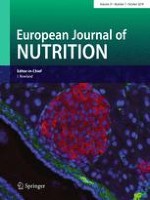Published in:

01-10-2018 | Original Contribution
The effect of perinatal fish oil supplementation on neurodevelopment and growth of infants: a randomized controlled trial
Authors:
Alireza Ostadrahimi, Hanieh Salehi-pourmehr, Sakineh Mohammad-Alizadeh-Charandabi, Seifollah Heidarabady, Azizeh Farshbaf-Khalili
Published in:
European Journal of Nutrition
|
Issue 7/2018
Login to get access
Abstract
Introduction
Long-chain polyunsaturated fatty acids, the most abundant fatty acids in the brain, are essential for the growth and development of the brain and the retina.
Objective
To evaluate the effect of fish oil supplementation on the development (primary outcome) and growth of 4- and 6-month-old infants.
Methods
In this triple-blind randomized controlled trial, 150 pregnant women aged 18–35 years, who were referred to healthcare centres of Tabriz-Iran, were randomly allocated into two groups. One group of women consumed fish oil supplementation (containing 120 mg docosahexaenoic acid and 180 mg eicosapentaenoic acid) daily, while the other consumed a placebo from the 20th week of pregnancy till 30 days after childbirth in a parallel design by a computer-generated block randomization scheme. The neurodevelopment of infants was the primary outcome; it was assessed using the ages and stages questionnaire (ASQ) at 4- and a-6 months of age. The growth of these infants was measured using weight, length and head circumference. The participants, the caregivers, and those assessing the outcomes were blind to the group assignment.
Results
Only one woman in the placebo group discontinued the intervention because of persistent severe nausea. All 75 neonates aged 4- and a-6 months in the fish oil supplementation group, along with 73 and 71 neonates aged 4 and 6 months, respectively in the placebo group, were followed and analysed. Although the mean scores of neurodevelopment at the end of 4 and 6 months were higher in the supplemented group than in the placebo group in each ASQ domain, a statistically significant difference was observed only in the communication domain at the 4th month (adjusted mean difference 2.63; 95% confidence interval 0.36–4.89). There was no significant difference in weight, length, or head circumference between the two groups of infants aged 4 and 6 months (P ≥ 0.05).
Conclusion
Based on the results, perinatal fish oil supplementation is beneficial for the communication domain of neurodevelopment of 4-month-old infants. The study results relating to the supplementation effect on other domains are inconclusive. There ought to be further studies with up-to-date lipidomic analysis to find biochemical correlate compared to an intervention and developmental finding.